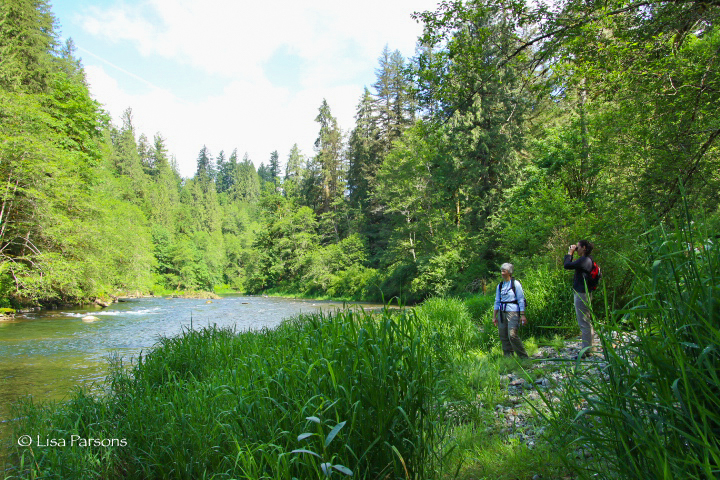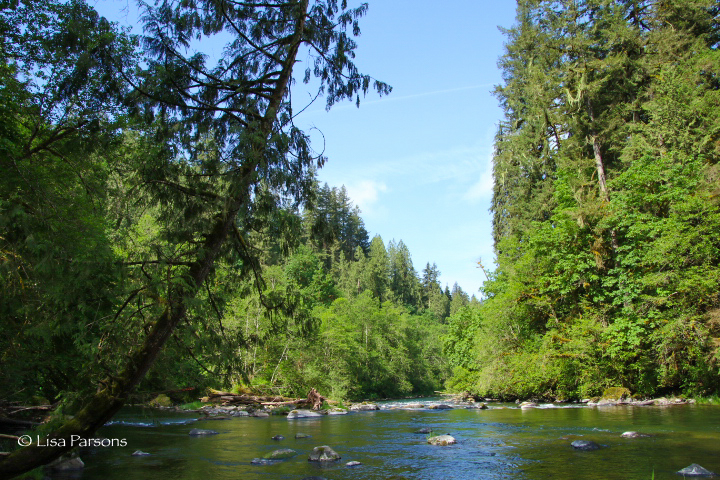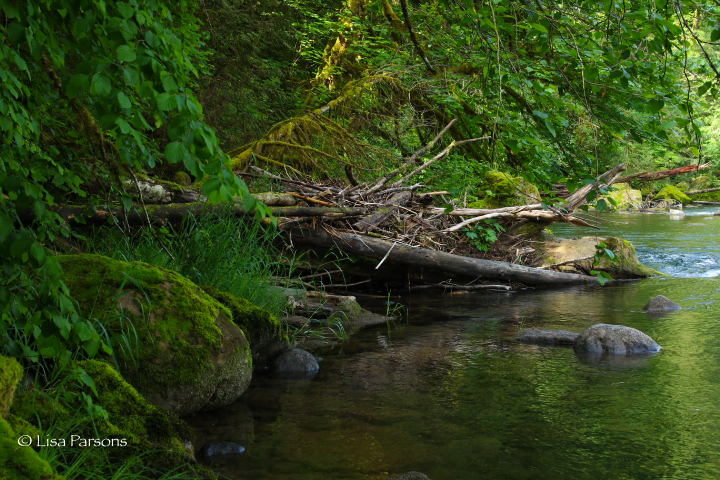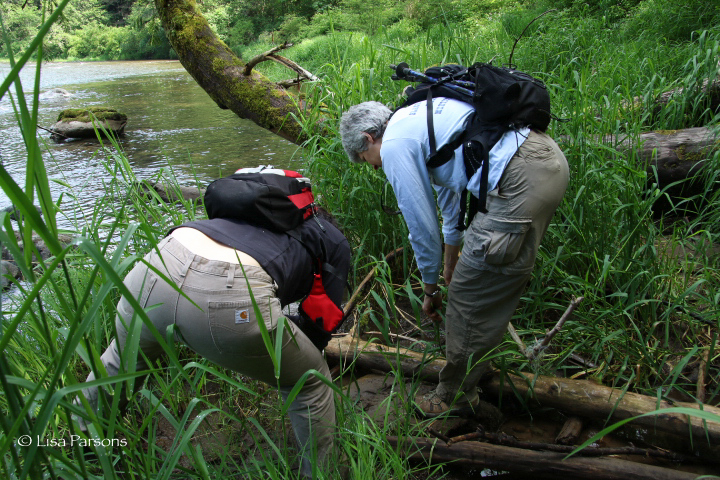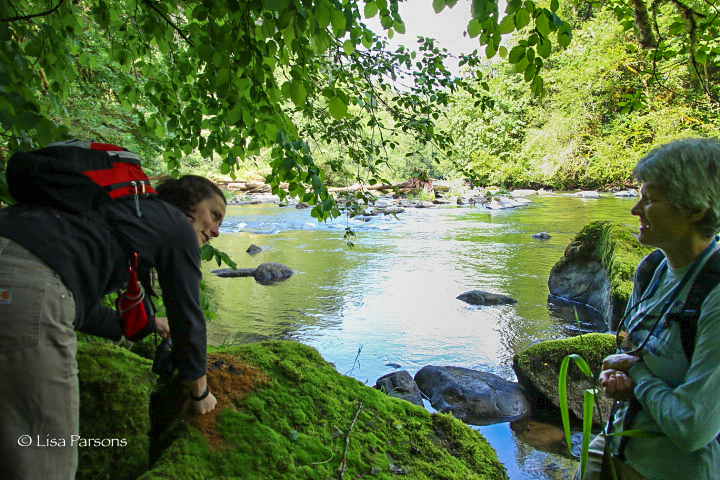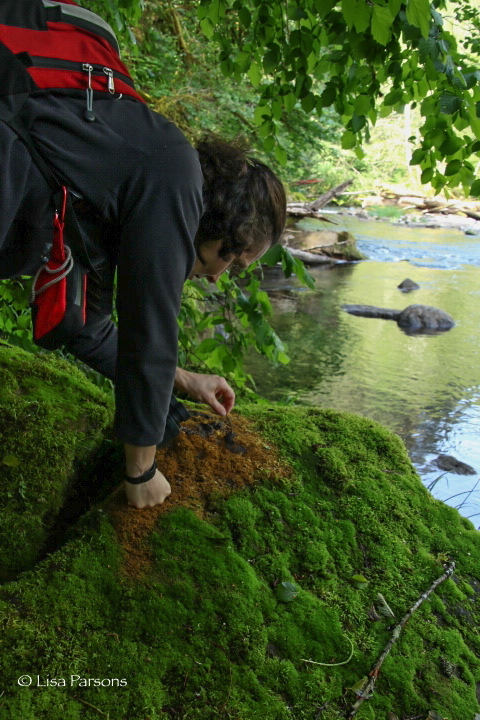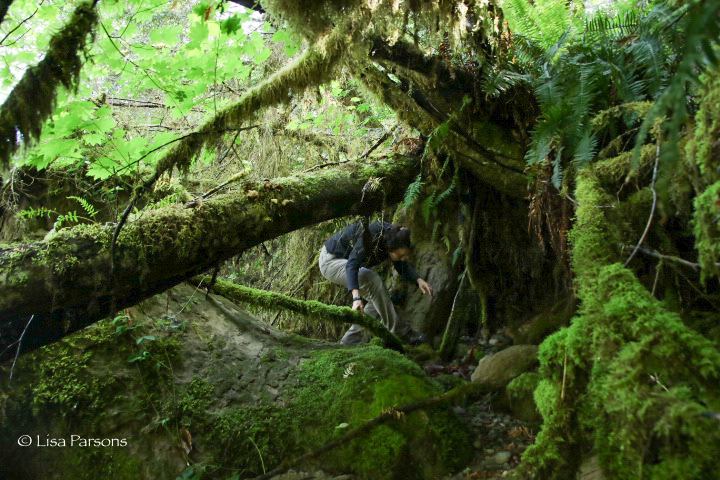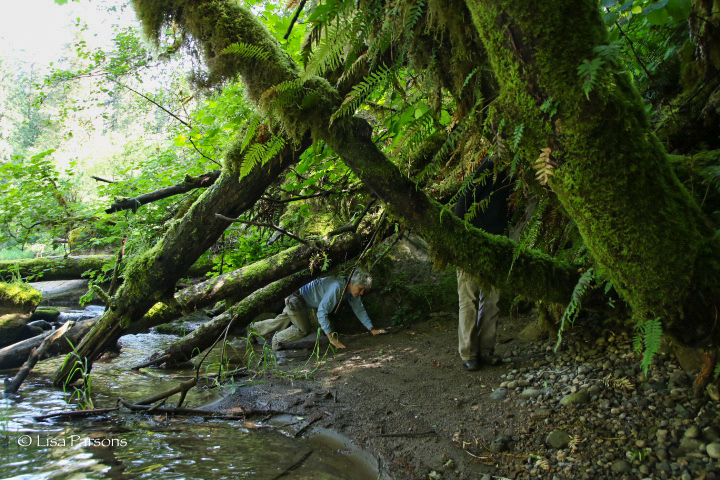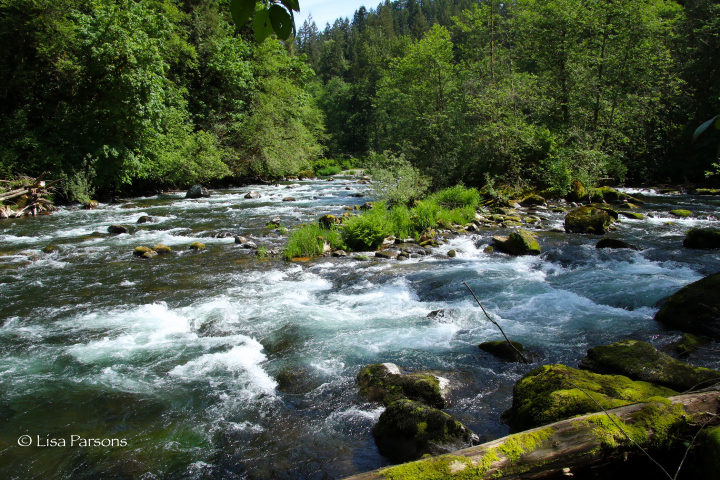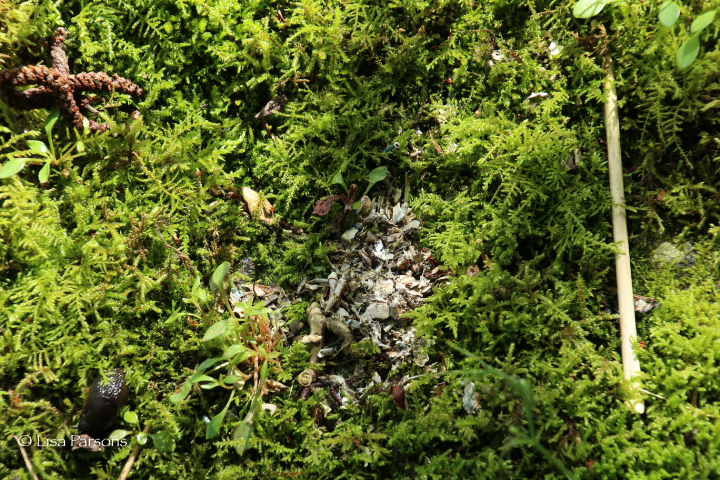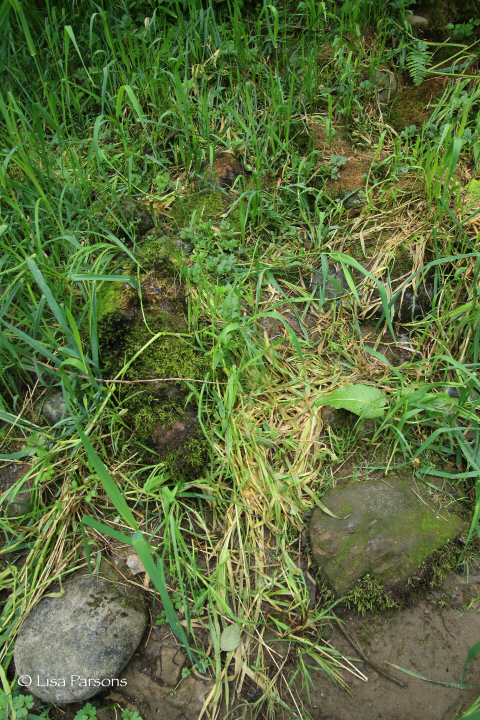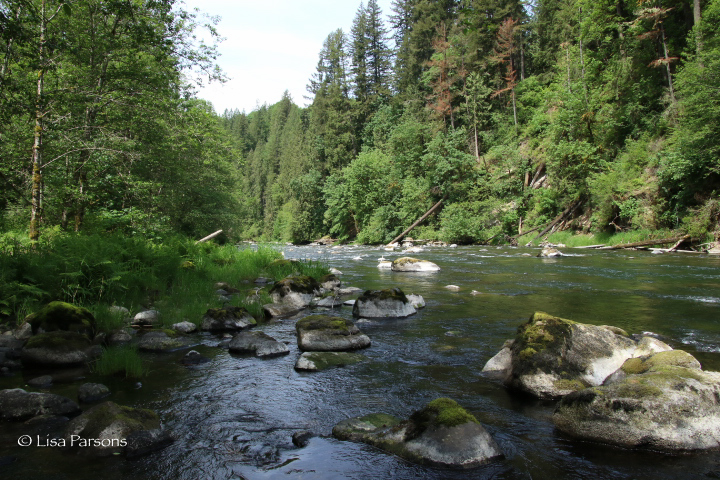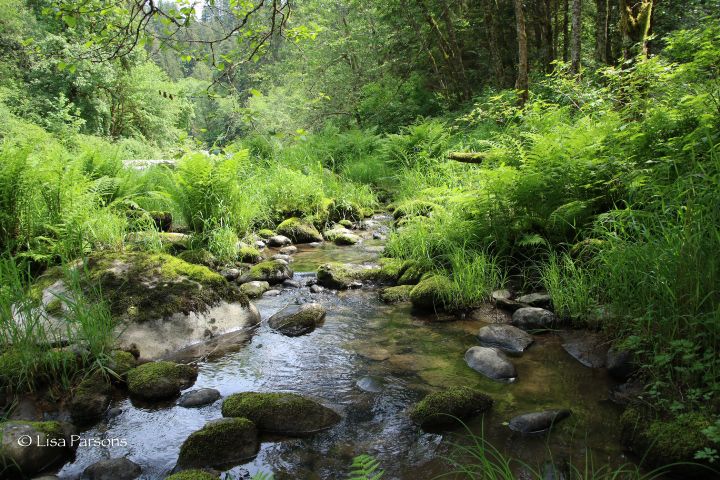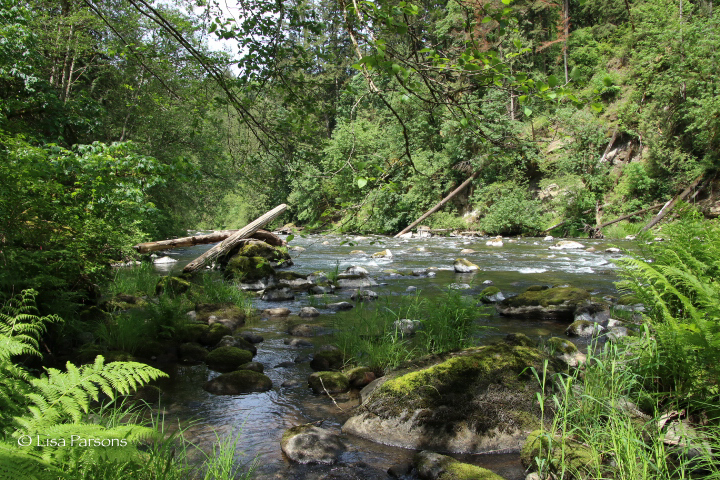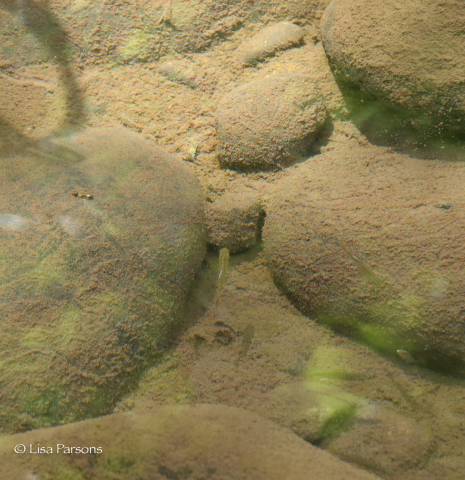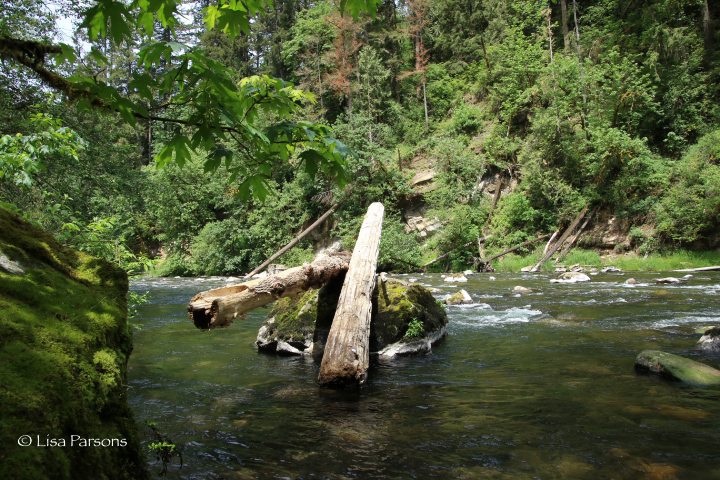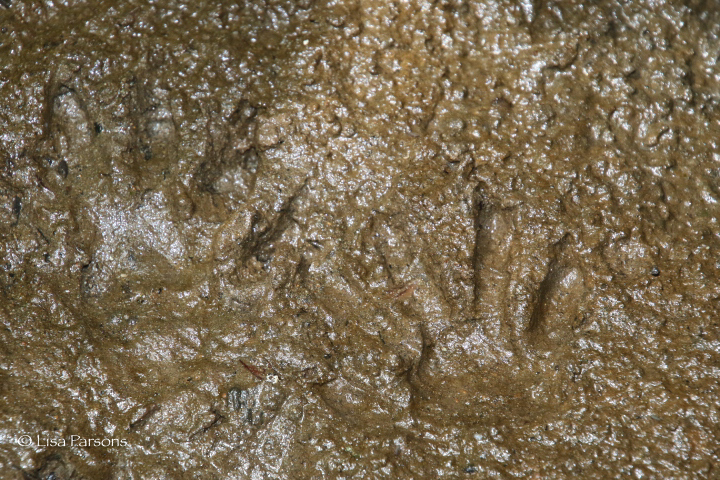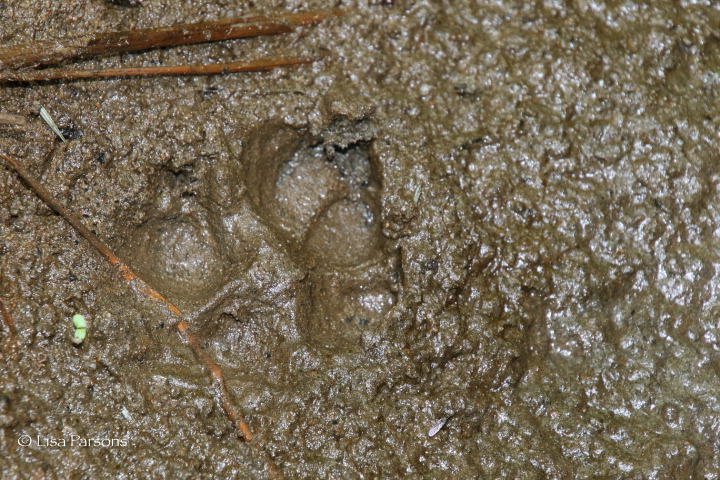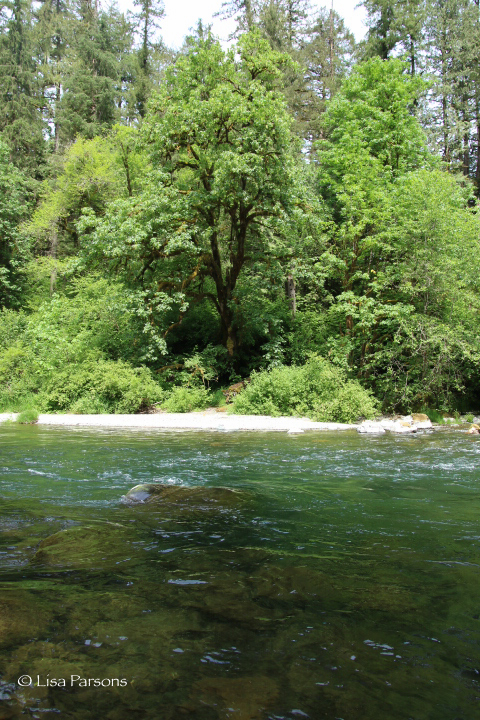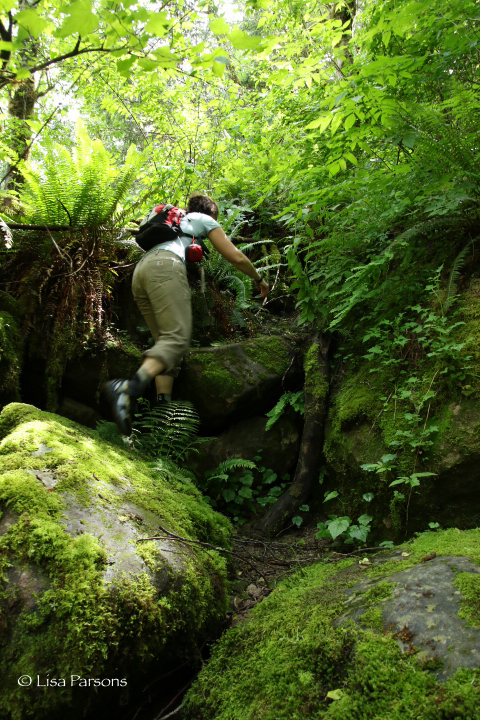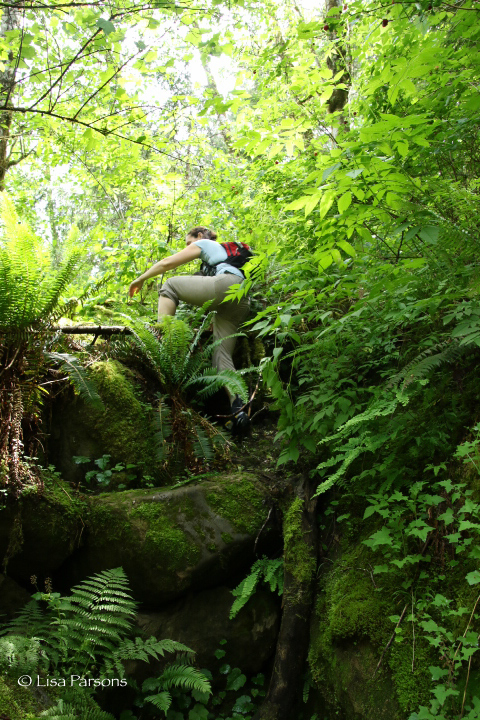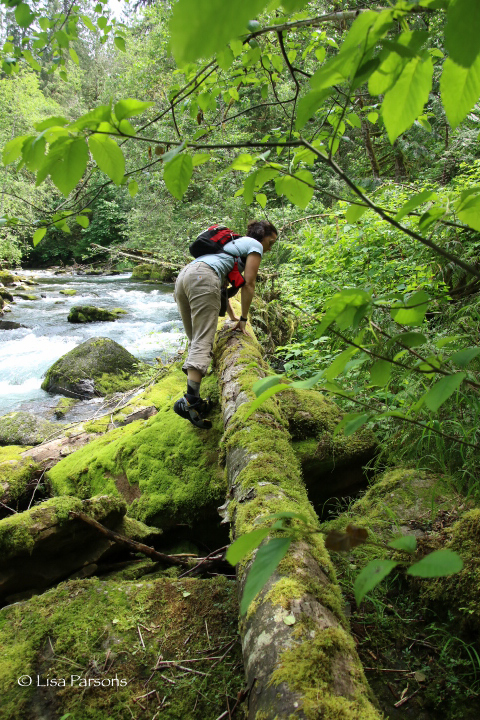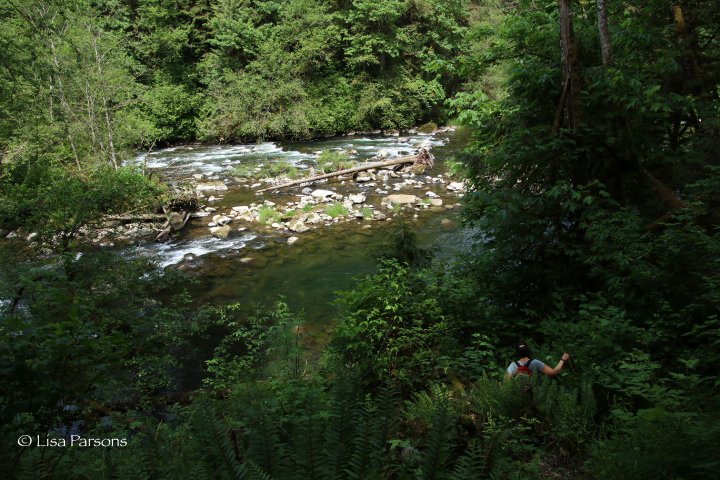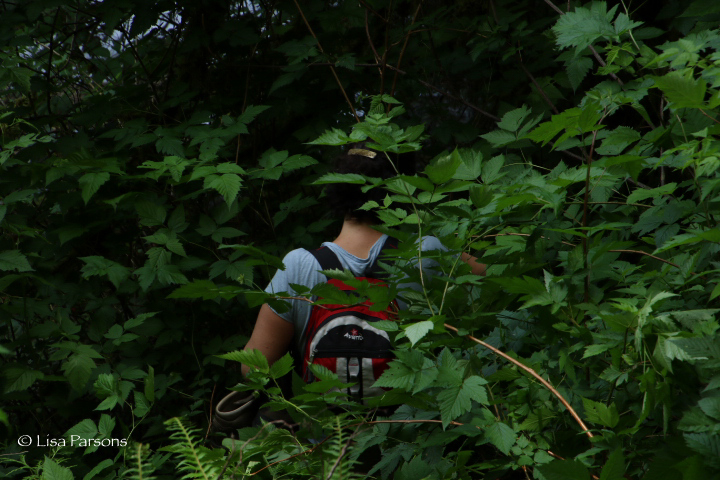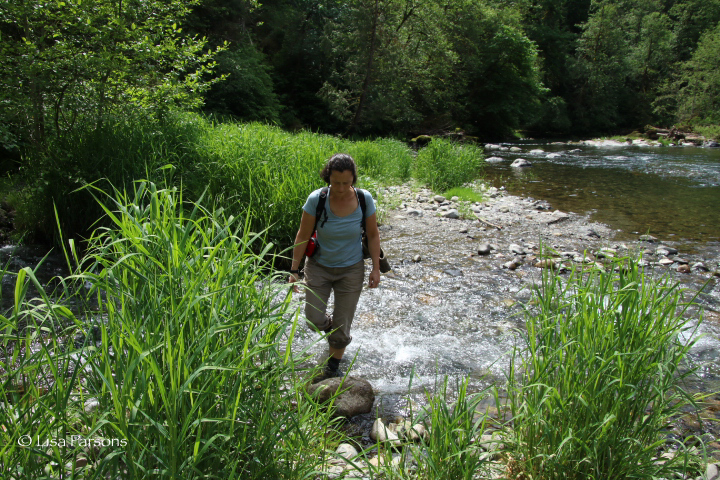Yesterday I spent the day as a guide and documentary photographer for a scientist, Michelle, doing an Otter study on the Green-Duwamish river. Michelle, along with my friend Sylvia and I were scouting the Green River Gorge looking for signs of Northern River Otters. My knowledge of the landscape in the river gorge w/ Michelle's knowledge of otter signs led to three latrine sites. That was in one small section of the river.
Latrine sites (places where they go to the bathroom) are important findings because that is where an otter will deposit it’s scat to let other otters know it has been there. Then other otters will leave their scat in the same way. New and old scat shows that the otters have frequented a site. Finding the scat may be easier than actually seeing the otter. Our goal was to identify where otter latrines and other signs were left and then Michelle will set up critter cams to try and document the otters coming and going from the area.
Scat found on a rock along the river.
The Otter study and the Otter Spotter program is a project of Woodland Park Zoo's Living Northwest. If you find any signs of river otters on Washington’s rivers visit the Otter Spotter and fill out the quick form on where and when you sighted the sign.
For more info on River Otters visit: http://www.bear-tracker.com/otterscat/
Introduction to Gorge Hiking
Michelle and Sylvia crossing creek.
Even though most of the Green River Gorge is a Washington State Park there are very few official trails. Often times to get out on the river you either need to be an experienced whitewater boater or hike along the shoreline at low water. Hiking in the Gorge requires the willingness to have leaves and spiders in your hair, swim in bone numbing cold water, and walk miles in muddy wet shoes. To find someone else willing to accept those terms has been an extra benefit to guiding Michelle in search of otter poop.
We wove our way between vine maple branches and around sandstone boulders. At one point we had to hike uphill through thick bushes above a cliff that ended at the waters edge. On our way down we found a rope tied to a tree to use to descend a steep slope of loose dirt. Lucky us! Usually I use the local vegetation to help me up and down the slopes. Then we were walking a log between two large boulders along the river followed by crawling under tree roots along the shoreline. Then it was time to hop from boulder to boulder to an area right before another spring. There we found a large area of possible otter scat and twisted flattened grass. Both are good signs that otters are probably using the site.
Besides the obvious scientific goal of our recent field work, my main work is a multimedia documentary project. It is the story of the Green River Gorge, the conservation history, the individual stories of people connected to the river, and a visual journey down it’s 14 mile length. Rediscovering more of the beauty, wildness, and rugged remoteness of the Gorge River Gorge means I’ll be spending a lot of time following game and fishermen trails, boulder hopping, off trail bushwhacking, and swimming the Gorge’s length.
To follow this journey visit:
www.greenrivergorgegreenway.org
Slideshow from our from our hike
